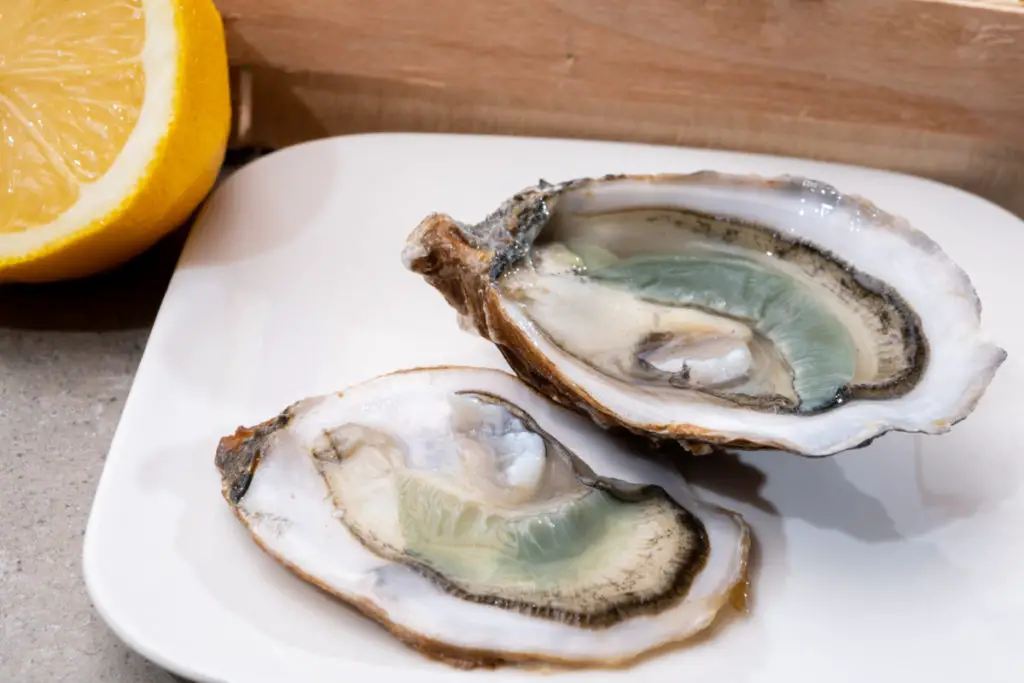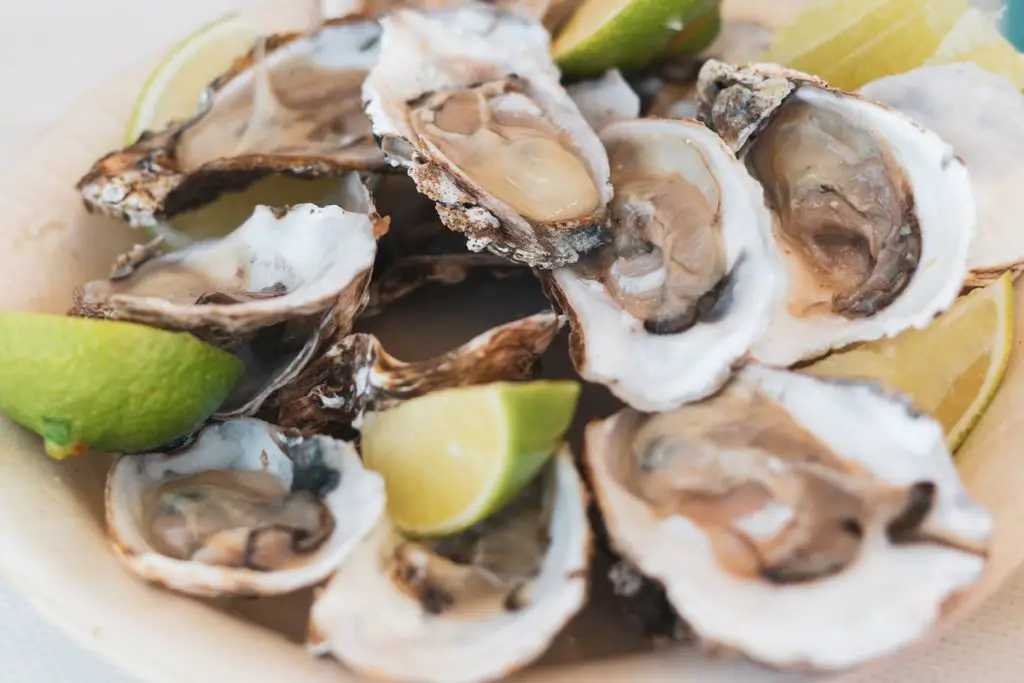You might have heard of the oyster before, whether that’s in the sea or on your dinner plate, but one thing you might not be as familiar with is oyster reproduction.

Most oysters only live about 20-30 years, and their reproduction methods are extremely different from humans.
This article looks at the lifecycle of the oyster and reproduction methods used by the fascinating creature. Let’s dive right in.
What Is An Oyster?
Oysters are bivalves that live in oceans around the world. They are filter feeders, meaning they eat plankton and other tiny organisms floating in the water.
The shell of an oyster is made up of calcium carbonate, which makes it hard to crack open. It takes a lot of pressure from predators like crabs to infiltrate their tough enclosures.
The two main types of oysters are the Pacific oyster (Crassostrea Gigas) and the European oyster (Ostrea edulis). Both species are native to coastal waters around the world.
In North America, the most common type of oyster is Ostrea Virginia. Oysters can grow to be quite large, with some reaching over 30 cm in length!
Why Are Oysters Important?
Oysters play an important role in maintaining healthy marine environments.
When oysters grow and reproduce, they help cleanse the water of harmful chemicals and pollutants, such as heavy metals and pesticides.
They also filter out microorganisms from the water. This helps keep our oceans clean for us to enjoy!
Oyster Lifecycle
Oysters are hermaphrodite bivalves that spawn in the summertime. Depending on the environment, or stage of life of the oyster, the oyster can be either male or female.
However, this cannot be at the same time. Once they spawn, and the temperature drops, the eggs and the sperm are let into the water and are fertilized.
Adult females can release around 5 to 8 million eggs at a time.
Once all the eggs are fertilized, the developing larvae float around in the ocean. Once they’re ready to settle down, they attach themselves to a resting place.
Once attached, the young oysters, which are also known as spat, start growing and getting their protective shells.
These shells are used for protection as they grow in size, but, for them to grow, they need enough food and time.
Oyster Farming

In certain areas, such as Duxbury Bay, the water temperature does not fluctuate enough for an oyster to spawn. If they did, there wouldn’t be enough young oysters to seed a farm.
Instead of harvesting wild spat, some oysters farms buy spat that has already been spawned and fertilized within a hatchery. Oysters on a lot of farms arrive when the spat is around 1-2mm in size.
The life cycle of an oyster will dictate and control the growing schedule on a single farm. Oysters usually take 18-24 months to mature to market size, which is approximately three inches.
Because growers only have a limited amount of land, they only have a finite amount of oysters they can comfortably grow on their farms.
Some of that area must be dedicated to oysters that are growing to maturity. Like agriculture, farmers have to plan their farming schedules to allocate enough time for growth.
What Exactly Is Spawning?
Oyster spawning season starts when water temperatures reach about 68 degrees Fahrenheit.
Since oysters are found everywhere from the Chesapeake Bay to Japan’s Hokkaido Island, and there are so many types of oysters to exist, spawning dates differ around the world.
In the northeastern United States, it usually occurs from the late half of June to the middle of August.
During spawning, the oyster’s appearance will also change. Before the process, the body is opaque, but during reproduction, it often looks milky or clear and nearly translucent.
If you care for and refrigerate the oyster, it won’t be harmful to you if you eat an oyster during the spawning process.
However, most people who eat oysters believe fresh oysters are the tastiest when they are not spawning.
Baby Oysters
Spawning takes so much conserved energy from oysters, yet for a lot of oysters, it’s the final bit of work they do as parents until they have to repeat the process the following year.
Once their sperm and eggs are in the water, they meet to fertilize, and, as we mentioned, the young develop into larvae.
The larvae take around six hours to fully develop, and a few more weeks to find the right place to settle up.
Their chosen location is usually a tough structure such as another oyster’s shell or a hard and rocky seafloor habitat.
After one year of maturation, the spat is ready to begin its spawning process and start the reproduction cycle again.
Changing Sex As Part Of The Oyster Life Cycle
A lot of oysters do not have a fixed sex through life, this is because they are protandric animals, and they can change from male to female through the course of their life.
Their reproductive organs contain sperm and eggs and after reaching maturation which takes around a year, oysters can release their sperm.
A few years after, once the oyster has built up energy again, their reproductive organs begin releasing eggs.
Oyster Habitat And Behavior
Oysters are filter feeders. They use their siphons to pump water through their gills where oxygen enters their bodies and carbon dioxide exits.
This allows them to breathe while filtering out plankton and other small organisms. When they’re not feeding, they’ll rest and hide under rocks or shells.
In some cases, oysters will move to different locations depending on how much food they need.
For example, if they don’t feel like eating at night, they may choose to stay closer to the surface than deeper areas.
Oysters are very sensitive to changes in temperature and salinity. As a result, they prefer to live near the coast and in brackish waters.
They are also known to be able to withstand high levels of pollution and toxins.
Crassostrea and Saccostrea oysters live mainly in the intertidal zone, meaning that they live between low tide and high tide.
The majority of these species are native to the Atlantic Ocean and the Pacific Ocean.
Some of the common names for these oysters include Eastern oyster, Olympia oyster, Kumamoto oyster, Manila clam, and Japanese pearl oyster.
Oyster Anatomy
The oyster anatomy includes:
- Shells – The main part of an oyster is the shell. It protects the soft parts of the animal and provides support for the muscles used for swimming.
- Gills – These are the tiny holes located on the top side of the shell. They allow the oyster to breathe by pumping water through them.
- Siphon – The siphon is a tube-like organ that connects the mantle cavity with the outside environment. It helps the oyster to filter out nutrients.
- Mantle Cavity – This is the area where the digestive system is located. The mantle cavity contains the heart, kidneys, and gonads.
- Cement gland – This is a gland that secretes cement onto the shell. It is responsible for creating the outer layer of the shell.
- Tentacles – These are long appendages that extend from the mantle cavity. They help the oyster to attach itself to surfaces and hold on during feeding.
- Cilia – These are microscopic hair-like structures that cover the entire body of the oyster. They help it to swim, filter particles from the water, and keep it clean.
Eating Oysters
If you want to know whether oysters are safe to eat, then you should know that there are no documented reports of human illness caused by consuming oysters.
Oysters are a good food source for humans because of their high nutritional value.
They contain many vitamins and minerals, including vitamin B12, which is needed by all animals to produce energy.
Oysters are considered a delicacy worldwide, and they are often eaten raw or cooked.
Some people enjoy oysters with cocktails or wine, and others prefer to serve them as appetizers. The most popular way to prepare your oysters is by using a shucker or serving them raw.
You can also cook them in saltwater or lemon juice before eating them.
Final Thoughts
I hope this article has helped answer your questions about how oysters reproduce.
We’ve covered a little about the species, as well as its lifecycle, anatomy, habitat, and behavior once fully developed.
Oysters are interesting protandric creatures and can live about 20-30 years, and remember they are also used as a healthy food source.
So don’t be afraid to try them next time you see them on a dinner menu!
